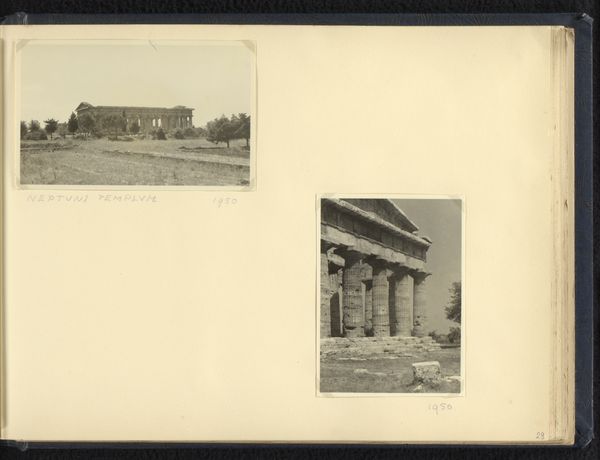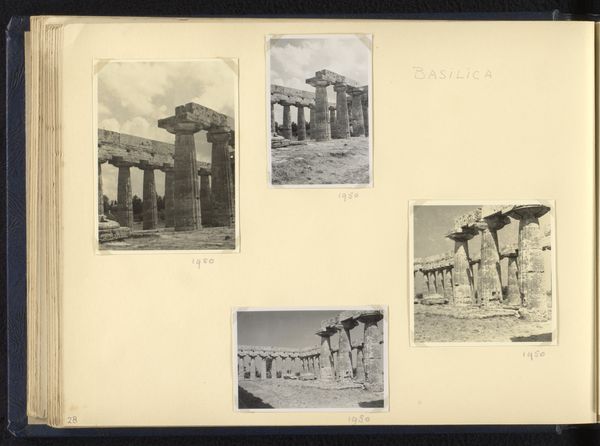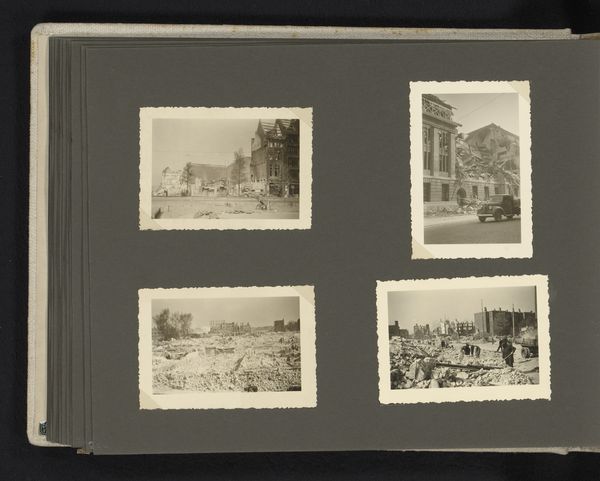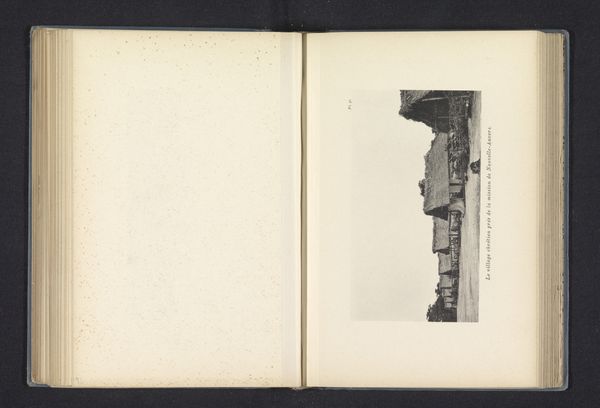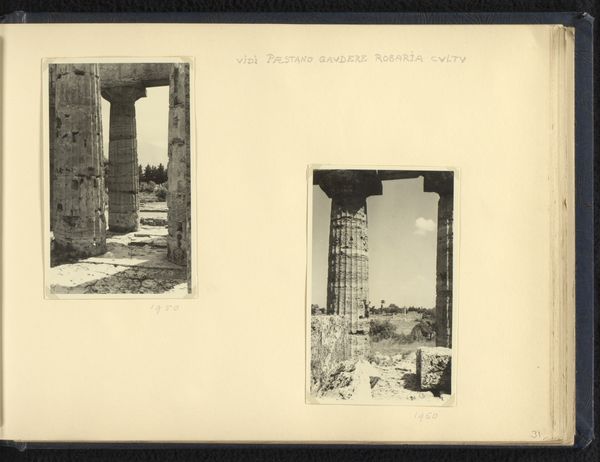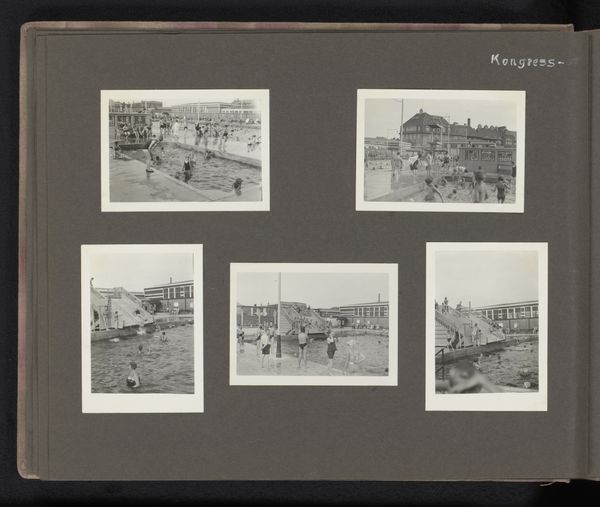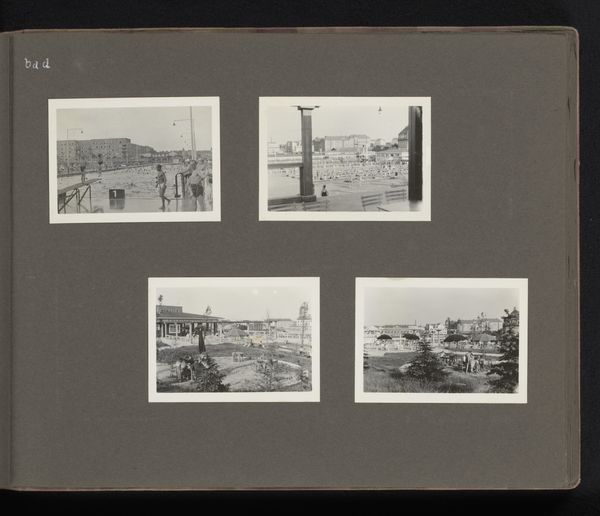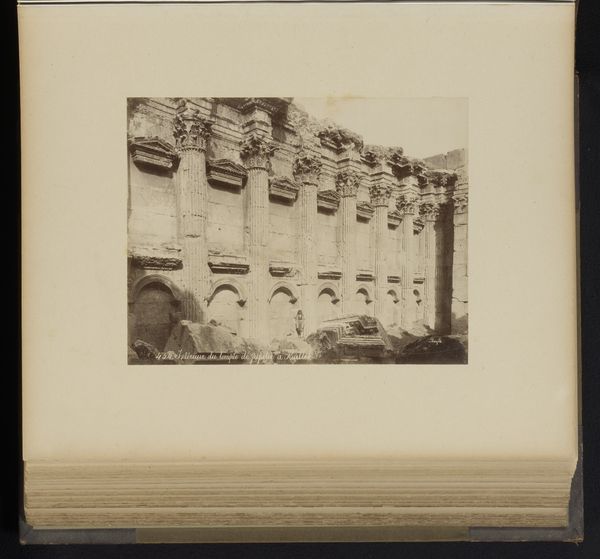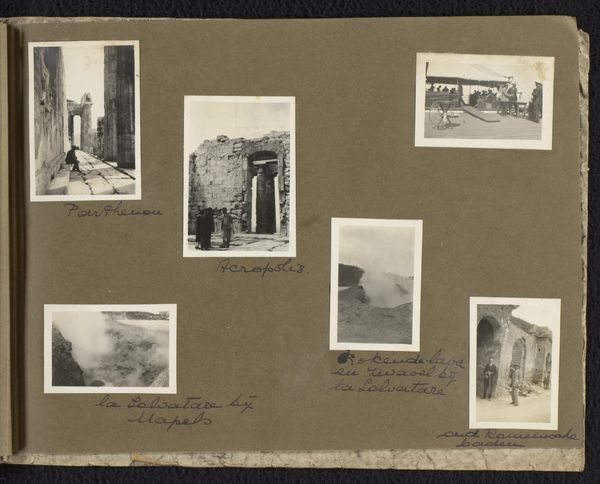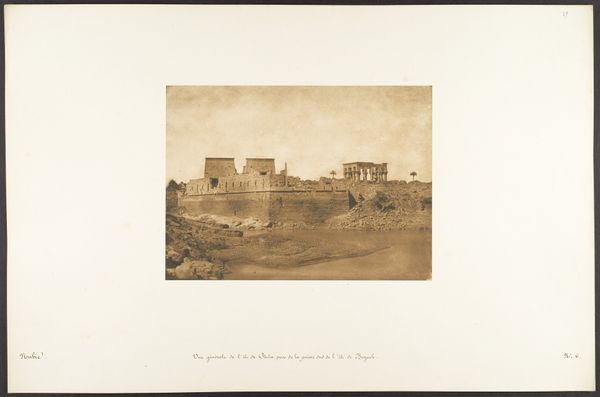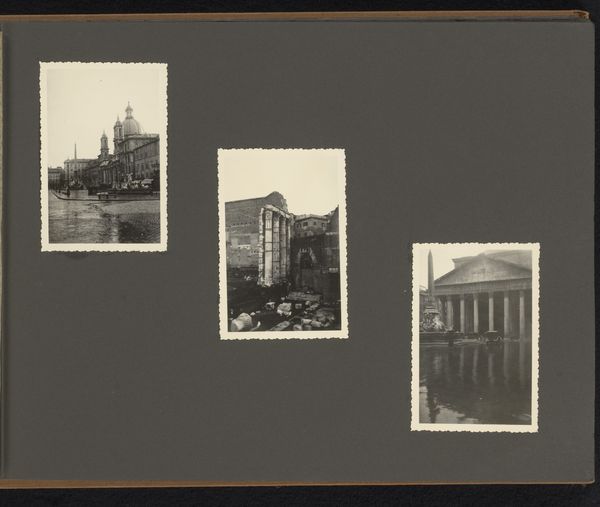
photography, architecture
#
greek-and-roman-art
#
landscape
#
photography
#
architecture
Dimensions: height 232 mm, width 336 mm
Copyright: Rijks Museum: Open Domain
Editor: We're looking at a photographic work from 1950 by Norbert van den Berg, titled "Twee foto's van de tempel van Hera in Paestum" – which translates to "Two photos of the Temple of Hera in Paestum." It's a stark, black and white image of this ancient Greek structure. It evokes a feeling of timelessness, but I'm curious about the photographer's motivations. What strikes you about these images? Curator: Well, immediately, I see this work operating on a few different levels. On one level it is, ostensibly, an image of classical antiquity. But the temple of Hera is not photographed to elicit wonder, there is no grandstanding. This tells us about the 20th century. Think about the context: Post-war Europe was invested in the ruin as both physical space and as a metonym for larger political concerns. What message does presenting this Temple, so rooted in history, deliver to an audience recovering from the atrocities of war? Editor: That's a perspective I hadn’t considered. So, the choice of subject is not just aesthetic but a commentary on contemporary society? Curator: Precisely! The ruin allows for a renegotiation of what the "West" or "civilization" truly mean. But also, look at how these images were created. This appears to be from a photography album, it is deeply concerned with documenting and memorializing. The way they are cropped and the date scrawled below the photo show how a site of western power has come to reside in the hands of a common photographer and, potentially, his family. Editor: So it's less about romanticizing the past and more about documenting and reclaiming history? Seeing these photographs as a modern record and a personal reflection gives it an entirely new dimension. Curator: Exactly. This work isn’t just about classical architecture, but how photography and its popularization shifted the relationship between historical sites, personal memory, and broader cultural narratives. It shows the power of images in shaping collective memory and even identity. Editor: That's fascinating; I'll definitely view historical photography with fresh eyes from now on! Thanks for your insights.
Comments
No comments
Be the first to comment and join the conversation on the ultimate creative platform.


